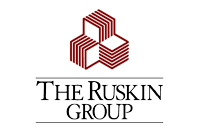With the first quarter of the year now behind us, one of the hottest topics in packaging continues to be sustainability, based on high readership of articles about Amazon and Nestlé posted last month on PackagingDigest.com. But we also saw keen interest in packaging for digital healthcare, as well as in a promotional pack from Nike.
Here are the half-dozen stories the worldwide packaging community was avidly reading in March 2019, based on page views:

6. 5 packaging trends emerging in 2019
What’s driving these five predictable packaging movements? Charles Haverfield, CEO of packaging supplier U.S. Packaging & Wrapping LLC, shares his insights:
1. Flexibility (flexible packaging!)
2. Changes in ecommerce
3. Environmental awareness (sustainability)
4. Less is more (minimalism)
5. The power of nostalgia (retro designs)
NEXT: Dive deep into today’s digital healthcare

5. How digital healthcare and packaging benefit users
This thorough look at how our digital world is changing healthcare also analyzes the packaging implications. Multiple examples of new commercialized packages show how patients can benefit from solutions that help monitor adherence, authenticate and prove the safety of genuine products, improve drug administration, provide proper direct delivery of an active drug and more.
The authors also present a possible digital revolution in the manufacturing process as healthcare solutions get more personal and down to a batch of one.
NEXT: Nike just does it!

4. Nike’s new green lobster shoe box tests packaging limits
A promotional limited-edition package for the new Concepts x Nike SB Green Lobster Dunks collectible shoes mimicked the design of totes used to hold live lobsters on commercial fishing vessels. Thermoforming expert Dordan solved several technical challenges—including rigidity and the box’s deep draw that pushed the limits of thermoforming technology—to deliver an engineered package within a mere five weeks.
According to Chandler Slavin, Dordan’s sustainability and marketing manager, overcoming the technical hurdles took “a deep awareness of the complex interactions between thermoform part design and production.” She says it was a matter of “understanding thermoforming, not as a hard science, but as an elegant dance between plastic, heat, vacuum and pressure.”
NEXT: Controversial chemical BPA still top of mind

3. Most food cans no longer use BPA in their linings
This also appeared in our top article list in February 2019 at No.3, with this write up:
About a year ago, the Can Manufacturers Institute made the bold announcement that, in reaction to market demands for more options in food safety, at least 90% of today’s food cans have replaced linings that previously contained the controversial chemical bisphenol-A (BPA).
The news is still making the rounds.
Reader comments over the last year show that the issue isn’t totally resolved:
Feb. 20, 2018: “I wonder if/when the beverage industry will adopt BPA free liners, as currently none has implemented such liner. Especially considering that consumption of canned beverages far exceeds that of canned foods.”
Nov. 20, 2018: “So WHAT actually IS the Lining Now?”
Dec. 2, 2018: “The linings are most likely closely related to BPA like BPS, BPF or vinyls compounds (BADGE, BFDGE). Those lining haven’t been studied as much and are not known by the general public. Recent studies showed that they are potentially as harmful as BPAs. Companies can put out BPA free cans and give a false sense of security to their customers by switching to other compounds that are as bad but unknown.”
Dec. 29, 2018: “Aldi stores sell spring water in plastic bottles that say right on them that they are BPA free.”
Mar. 4, 2019: “The problem is different sources gives different info on whether BPA is still in cans. Some say that BPA remain in most cans.”
Do you have something to add or ask? Click the headline above and leave your comment at the bottom of the article.
NEXT: Amazon chooses reusable packaging for its own products

2. Amazon chooses refillable packaging for Clean Revolution
Amazon is using the new Replenish 3.0 packaging design for its Clean Revolution line of cleaning products sold through its ecommerce platform. The reusable Replenish bottle mates with small pods of concentrated liquids to reduce the overall sustainability footprint. Consumers add water from the tap to mix a full bottle, saving up to 90% of the water typically in cleaning products, lowering shipping costs and eliminating the risk of leaks. One pod makes six bottles of product.
With this Clean Revolution introduction, Amazon is tapping into the new reuse movement sweeping the U.S.
NEXT: Nestlé’s sustainable packaging vision

1. Nestlé clarifies its sustainable packaging vision
The world’s largest food company has an aggressive goal for sustainable packaging: To make 100% of the company’s packaging recyclable or reusable by 2025, with a focus on avoiding plastic waste.
In the best-read article in March 2019 on PackagingDigest.com, Nestlé USA packaging sustainability manager Walt Peterson explains how the company will achieve it. Click the headline link above to read all the details.
********************************************************************************
EastPack 2019 (June 11-13) is the region’s premier packaging event connecting professionals from companies like PepsiCo, Pepperidge Farms and Mars with suppliers offering the latest packaging technologies, including a range of automation solutions, from semi-automatic equipment to sophisticated “smart” systems. Register to attend today!
https://www.packagingdigest.com/packaging-design/6-gold-star-stories-about-packaging-2019-04-12
Comments are closed.

